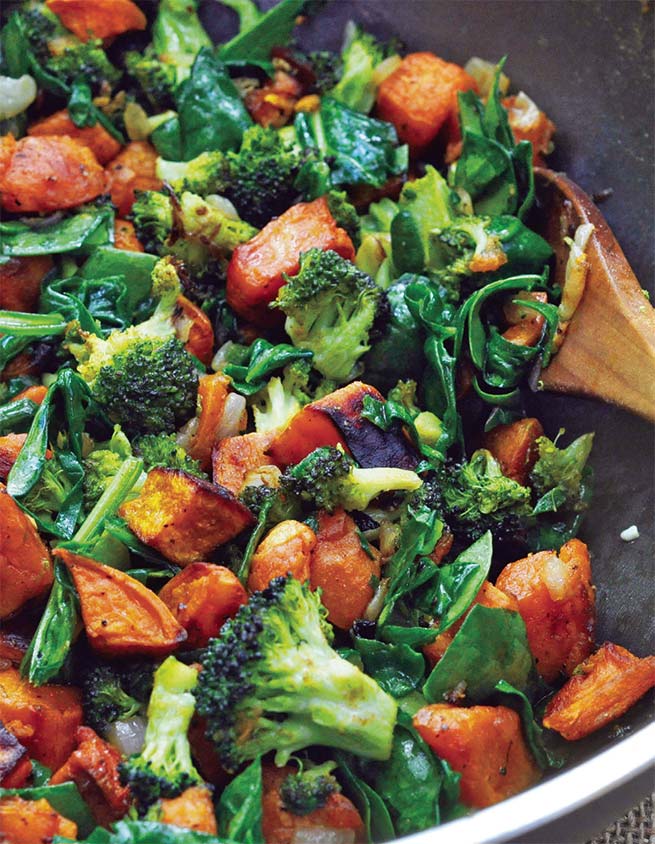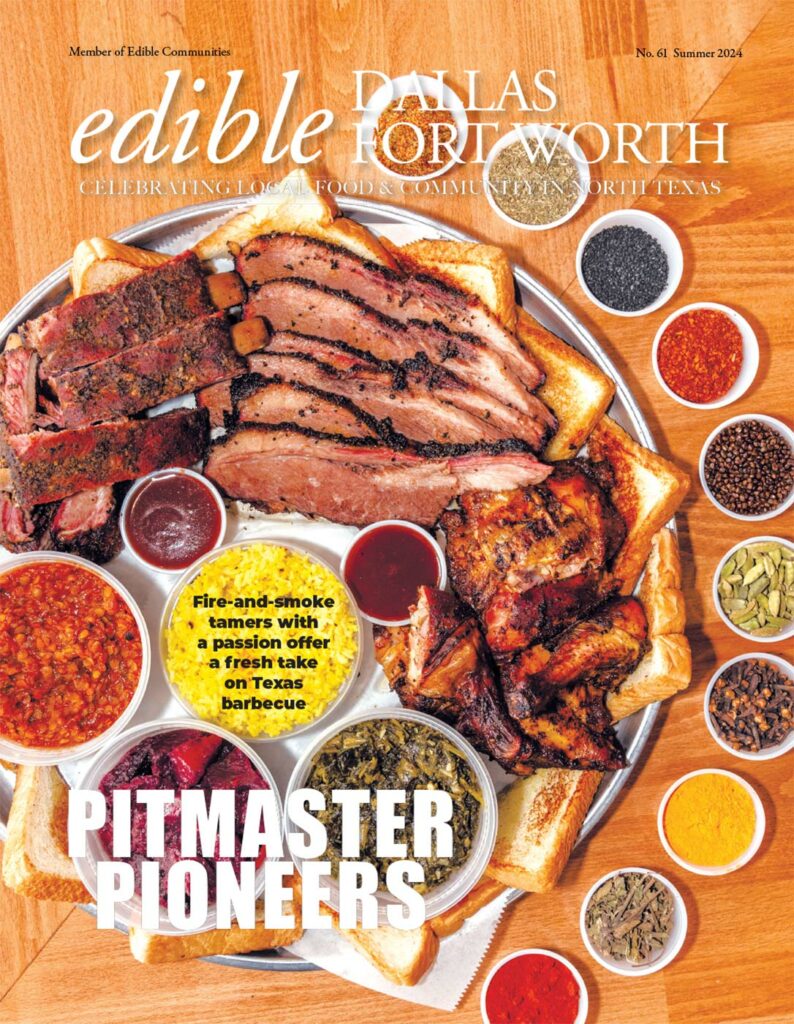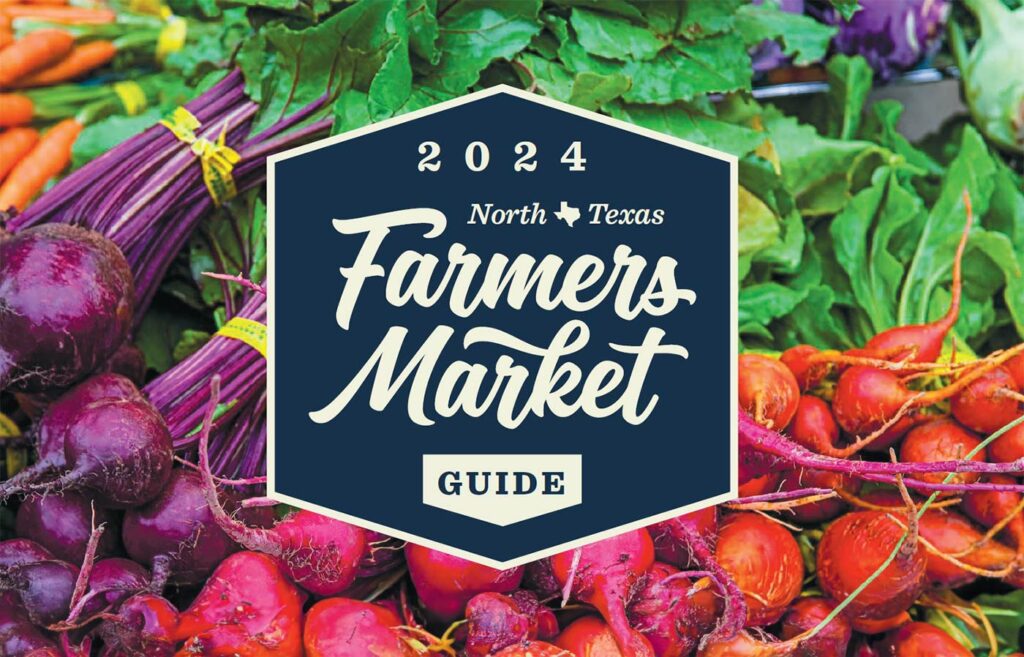
photo: iStock.com/Zeleno
I don’t know why it took us all so long to come around to the greatness that is sweet potato. I mean, we all grew up with them, right? Seeing them underneath a blanket of gooey marshmallows at Thanksgiving—and maybe Christmas, too, if, like ours, yours was a redo of the turkey/stuffing line-up, but with the addition of a molded, wreath-shaped Jell-O “salad” in artificial seafoam green.
But that was it for the much-loved, quickly forgotten sweet potato. Sweet potato casserole was always heralded as such a special dish at our table. Yet besides those two days of the year, I never saw sweet potatoes. Not once. Not ever.
I’m not sure if sweet potatoes were scarce in Texas in the 1970s, or if it didn’t occur to anyone to do what we now do with almost everything— roast them. My mom told me recently that she couldn’t remember why she didn’t do more with sweet potatoes. Growing up, her mother served them sans marshmallows, simply sliced and baked. But even then, not very often, she remembers, because her brother and father didn’t like them. Or any other vegetable, apparently.
Fast forward to the early 2000s. I flew to Chicago to meet Charlie Trotter, the late superstar chef who was ahead of his time in so many ways. He loved vegetables, and long before plant-based was a thing, he was experimenting with them. After I observed him during service on a Saturday night, I wanted him to show me how to make a recipe that was inspired by his mom, so he took me into the kitchen and demonstrated a gratin Dauphinois, made with alternating layers of sweet potatoes and Russets, with cream poured between them. It was simple, elegant and perfect.
My grown-up love for sweet potatoes began right then, with Charlie Trotter at my side. I made Trotter’s gratin for my mom and dad one evening for dinner, without a recipe as much as a will to recreate the experience of elevating a vegetable that I dismissed completely— sweet potatoes—and turning it into something divine.
Plus I wanted to show my mom and dad that sweet potatoes could be more than a sugary holiday dish—and I did. They loved it.
“My grown-up love for sweet
potatoes began right then, with
Charlie Trotter at my side.”

Sweet Potato and Broccoli Hash
photo: Ellise Pierce
My love for sweet potoatoes—called patate douce in France—has grown exponentially since then. I went on to mash sweet potatoes with a little maple syrup and cacao nibs, a recipe I so loved that I put it in my cookbook. I’ve roasted them and smashed them and put them into almost everything I can think of. Biscuits. Soups. Pies. Even a vegetarian chili. I’ve made fries with them and put them into tacos. I do not go to the grocery without buying at least two because, like avocados and French coffee, they are a staple, something I consume with great frequency.
It’s funny how things change. One of my first years living in Paris, I went to a friend’s house for Thanksgiving, and volunteered to bring a side dish. I’d just gotten Ottolenghi’s new cookbook, Ottolenghi, still unreleased in the States, and inside I found a recipe for sweet potatoes not unlike the gratin that Charlie Trotter showed me more than a decade prior, but with sage leaves in between the layers.
I made it that year and every one aft er that. And when I do, wherever I am in the world, I think of Charlie Trotter, and my expat Thanksgivings, and the ones before that, too, with marshmallows on top.
FIVE SAVORY WAYS WITH SWEET POTATOES
Don’t wait for the holidays to eat sweet potatoes. They are as common as Russets, they’re good for us (orange color = beta carotene), they’re cheap—and they’re easy to cook. Soup them. Roast 1 pound each carrots, sweet potatoes and Russets in a 400°F oven with a drizzle of olive oil until lightly browned, 30 to 45 minutes. Put in the blender with the juice and zest of 1 orange, a little cumin and enough veggie stock to thin it out.
Make a hash. Roast your diced sweet potatoes in a 400°F oven for 30 to 45 minutes. Then throw them in a large skillet with a little olive oil, steamed broccoli florets, diced yellow onion, chopped fresh jalapeño and a couple handfuls of baby spinach thrown in at the end. Add cayenne if you want a little heat.
Rosti your sweet potatoes. With a julienne slicer, make lots of long thin strands of your sweet potato and then toss them in a bowl with a tablespoon or 2 of fl our and some sea salt and pepper. Put a little canola or peanut oil into a large skillet over medium-high heat and add spoonfuls of the potato strands, cooking until crisp on one side, and then the other.
Make sweet potato fries. Peel your sweet potatoes, cut them in wedges, then toss them on a large baking sheet with some olive oil and sea salt and pepper and bake in a 400°F oven for 30 to 45 minutes.
Bake and stuff them. Prick your sweet potatoes all over with a fork and put them in a 400°F oven for 1 hour or until cooked through. Split open, and stuff with black-eyed peas, steamed broccolini and drizzle with chipotle yogurt (I use 1 to 2 chipotles in adobo and blend with 1 cup Greek yogurt).
Ellise Pierce is the Cowgirl Chef and author of COWGIRL CHEF:
Texas Cooking with a French Accent (Running Press). Read her blog
(www.cowgirlchef.com), follow her on Twitter (@cowgirlchef) and Instagram
(cowgirlchef)











